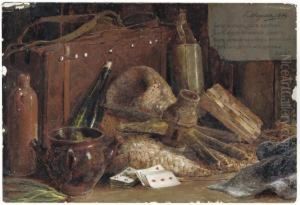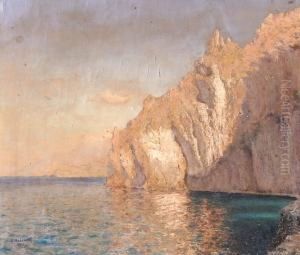Pavel Romanovich Medem Paintings
Pavel Romanovich Medem was a prominent Russian artist associated with the Mir Iskusstva (World of Art) movement, which was an influential art movement in Russia during the late 19th and early 20th centuries. Medem was born on August 21, 1889, in the city of Saint Petersburg, which was then the capital of the Russian Empire. He grew up during a period of significant social, political, and cultural change, which was reflected in the evolving art scene of the time.
Medem received his artistic education at the Saint Petersburg Academy of Arts, which was the preeminent art institution in Russia. He studied under famous Russian artists and was influenced by the Art Nouveau style, which was characterized by its use of flowing lines and organic forms. His work often featured themes of Russian folklore, mythology, and the natural world, blending traditional Russian artistic elements with new European trends.
As a member of the Mir Iskusstva, Medem was part of a group that sought to break away from the academic constraints of the time and promote individual artistic expression. The group, which included notable figures like Sergei Diaghilev, Leon Bakst, and Alexandre Benois, organized exhibitions and published a magazine to disseminate their ideas. Medem's contributions to the movement were well received, and he became known for his illustrations, graphic works, and paintings.
Despite his growing reputation, Medem's career was cut short by the tumultuous events of the early 20th century. The Russian Revolution of 1917 and the subsequent civil war profoundly affected the country's artistic community. Many artists fled Russia, while others adapted to the new Soviet regime. Medem's life and career were tragically ended when he died at a relatively young age on May 14, 1923, under circumstances that are not well-documented.
Due to his early death and the political upheavals of the time, Medem's legacy is not as well-known as some of his contemporaries. However, his works remain a testament to the creative flourishing of Russian art during a period of profound change and continue to be appreciated by art historians and collectors for their contribution to the Mir Iskusstva movement and the broader narrative of Russian art history.

